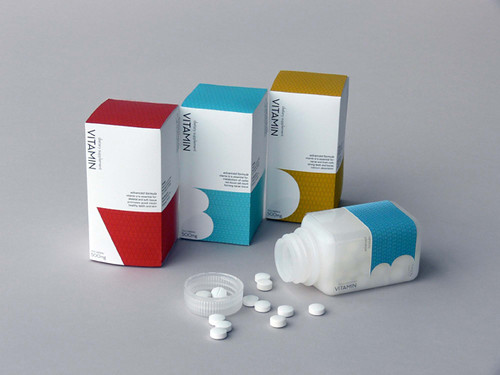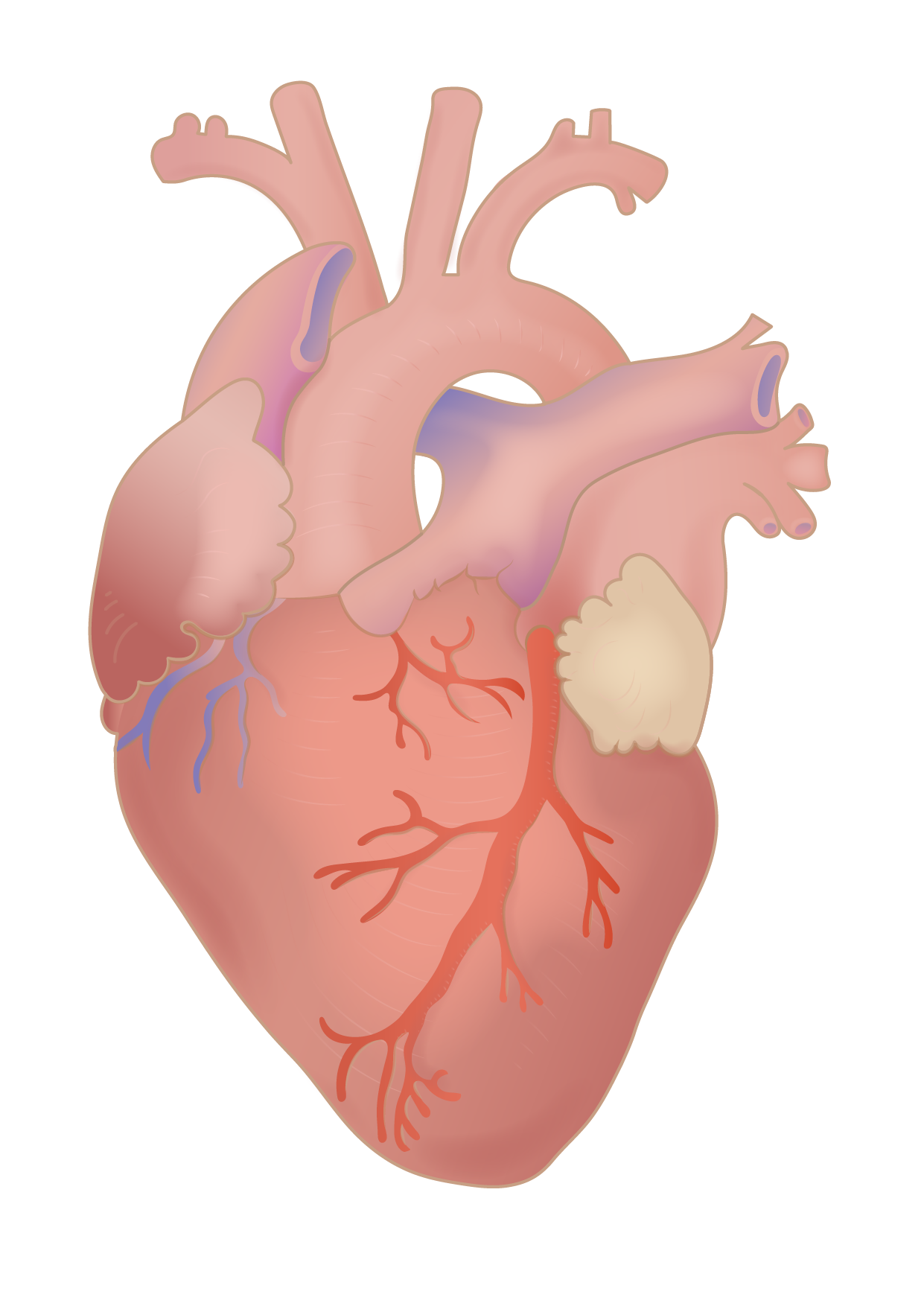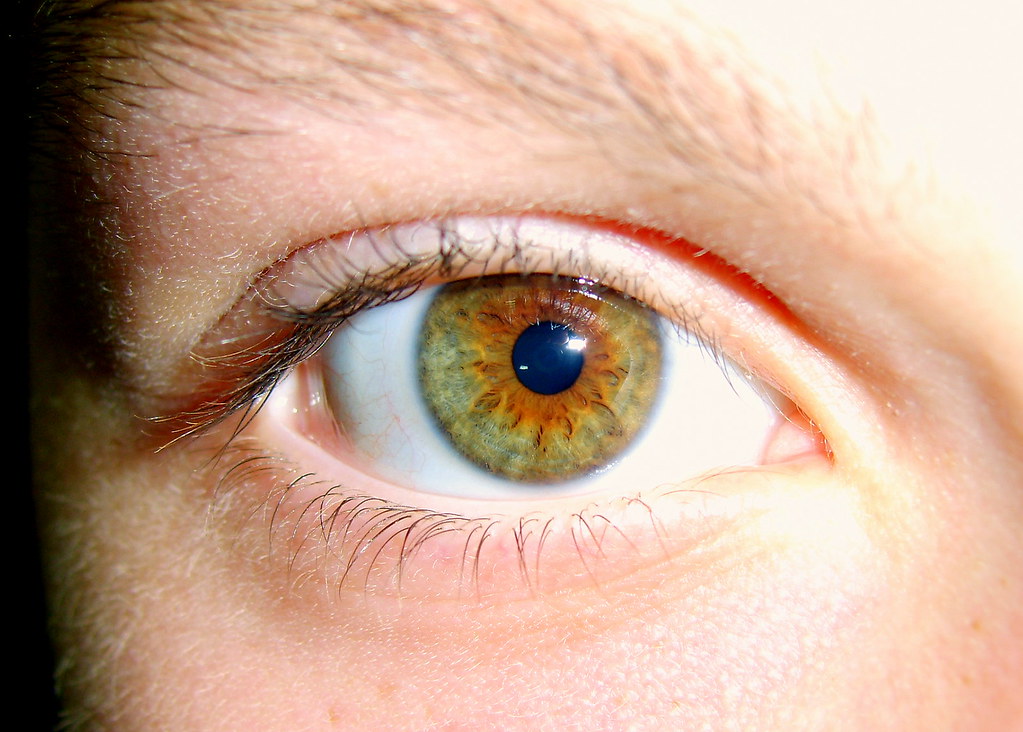
Maintaining sharp, clear vision is a cornerstone of a high quality of life, allowing us to fully engage with the world around us. Just as we carefully consider what fuels our bodies for energy and vitality, the adage “You are what you eat” holds profound truth, particularly when it comes to the delicate structures of our eyes. Our daily dietary choices are powerful determinants, either nurturing our ocular health or, inadvertently, contributing to its decline. It’s a connection that’s often overlooked, but one that ophthalmologists and eye care professionals emphasize as fundamental.
While we often associate diet with weight management or cardiovascular well-being, the role of nutrition in sustaining healthy eyesight is equally significant. Certain foods, when consumed excessively, can set in motion a cascade of detrimental effects, from inflammation and oxidative stress to restricted blood flow and increased intraocular pressure. These processes can pave the way for serious eye conditions, including age-related macular degeneration, cataracts, diabetic retinopathy, and even glaucoma. Understanding these dietary pitfalls is the first crucial step toward safeguarding our precious vision.
The good news is that we have significant control over this aspect of our eye health. By becoming informed about the specific foods that pose a threat and making conscious choices to limit or avoid them, we empower ourselves to take proactive steps. This guide will illuminate some of the most concerning dietary culprits, shedding light on why they are harmful and how reducing their intake can protect your vision for years to come. Let’s dive into the foods ophthalmologists urge us to limit for optimal eye health and clarity.

1. **Excessive Refined Sugars & Sugary Beverages**Excessive consumption of refined sugars and sugary beverages stands as a significant threat to eye health, far beyond its impact on general metabolic well-being. High sugar intake directly contributes to rapid spikes in blood sugar levels, a mechanism that can instigate profound damage to the tiny, delicate blood vessels within the eyes over time. This particular pathway is a primary precursor to severe conditions like diabetic retinopathy, a leading cause of vision loss. In its early stage, non-proliferative diabetic retinopathy (NPDR), the swelling caused by these damaged vessels can distort the retinal surface, manifesting as general blurriness, floaters, and difficulties in focusing.
The prolonged exposure to elevated blood sugar can also intensify inflammation and oxidative stress throughout the body, including the ocular tissues. These cellular stresses are believed to accelerate age-related macular degeneration (AMD), a progressive eye condition that affects central vision, crucial for tasks like reading and driving. Moreover, excessive sugar consumption can lead to increased eye pressure, which exacerbates the risk of other vision problems. The combined effect of vessel damage, inflammation, and heightened pressure creates a perilous environment for long-term eye function.
It’s not just about the obvious candies and desserts; hidden sugars in seemingly innocuous processed foods, energy drinks, and packaged fruit juices also contribute to this insidious cycle. Examples from the context include “Sodas, energy drinks, and packaged fruit juices,” “Candies, pastries, and other high-sugar snacks,” and “Sugary cereals and flavored yogurts.” Even sweetened drinks, which might seem less harmful, deliver a concentrated dose of sugar that can overwhelm the body’s regulatory systems and contribute to eye damage.
To mitigate these risks, it is strongly recommended to drastically cut down on refined sugars. Opting for natural sugars found in whole fruits, which also come with beneficial fiber and antioxidants, is a much healthier alternative. This dietary adjustment helps stabilize blood sugar levels, reduces inflammatory responses, and ultimately protects the intricate blood vessels that supply the retina, preserving vision clarity and reducing the likelihood of sugar-induced eye conditions.
Read more about: Your Heart’s Best Friends and Worst Enemies: 15 Foods Cardiologists Say to Skip (Plus Healthier Picks!)
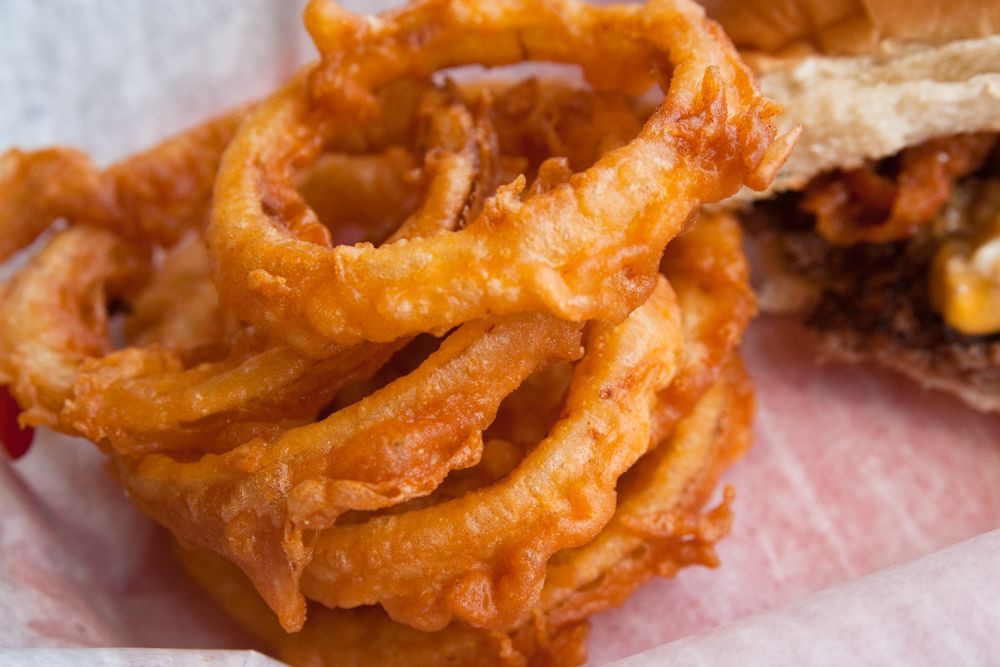
2. **Trans Fats**Trans fats represent a particularly insidious dietary component known to wreak havoc on overall health, and eye health is no exception. These industrially produced fats significantly increase harmful cholesterol levels, a factor directly linked to a higher risk of developing age-related macular degeneration (AMD). The accumulation of cholesterol and plaque within blood vessels can restrict crucial blood flow to the eyes, impeding the delivery of essential nutrients and oxygen required for optimal retinal function.
AMD is a progressive eye condition that primarily affects older adults and stands as a leading cause of vision loss in individuals over the age of 50. The macula, a vital central part of the retina, is responsible for the sharp, central vision necessary for intricate tasks such as reading and driving. When trans fats contribute to damage or deterioration of this critical area, it leads to a loss of central vision, profoundly impacting daily life. While AMD typically does not cause total blindness, its later stages can result in severe vision impairment.
Foods high in trans fats are unfortunately common in many modern diets, often found in convenience items and fried preparations. The context points to “Fried foods in low quality oils (vegetable oil, canola oil, peanut oil, etc.)” as a prime culprit, where hydrogenation processes create these harmful fats. Other notable sources include “Margarine” and various “Processed snack foods,” which often contain partially hydrogenated oils to extend shelf life and improve texture. These items, though often tasty, carry a heavy cost for ocular well-being.
Limiting or entirely avoiding trans fats is a critical step in a vision-protective diet. Reading food labels to identify and steer clear of “partially hydrogenated oils” is a practical strategy. By reducing the intake of these detrimental fats, individuals can help maintain healthy cholesterol levels, ensure unimpeded blood flow to the eyes, and significantly lower their risk of developing or worsening age-related macular degeneration, thereby preserving central vision and overall eye health.
Read more about: Beyond the Bulk: The 15 Healthiest Costco Finds You Need in Your Cart Right Now!
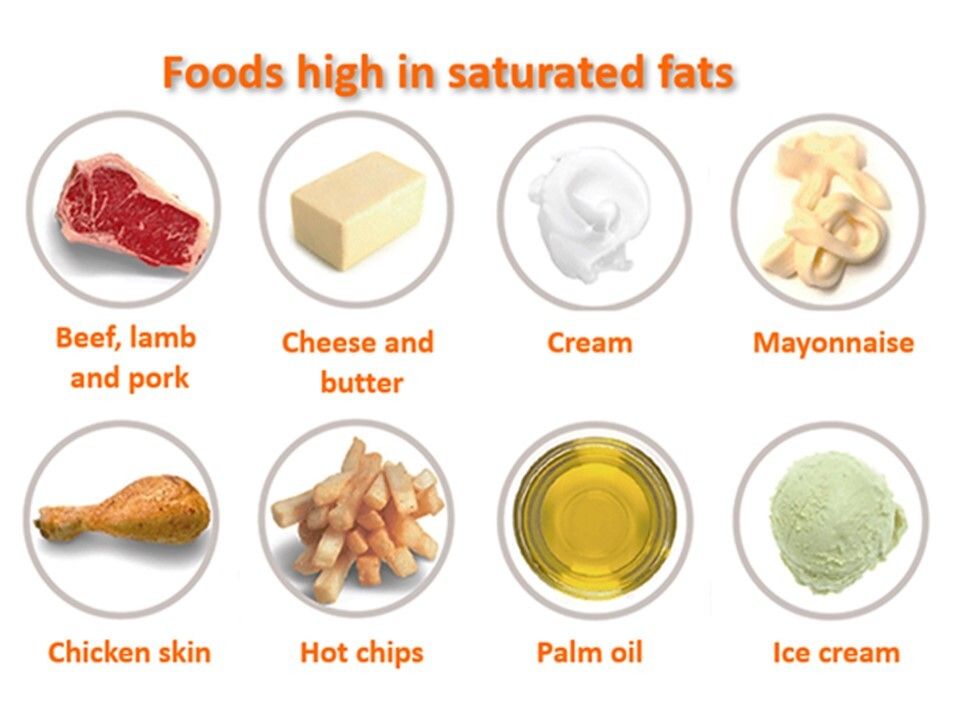
3. **Saturated Fats**While often grouped with trans fats, saturated fats present their own distinct set of challenges for eye health, especially when consumed in excessive amounts. An “excessively high intake of saturated fats can contribute to cardiovascular diseases,” which in turn exert a damaging influence on the eyes by “impairing blood flow.” The eyes, with their intricate network of tiny blood vessels, are particularly vulnerable to any compromise in circulatory efficiency. Healthy fats are indeed essential for our diets to fuel our bodies properly, but it is the overconsumption of *unhealthy* sources that causes problems.
One particularly severe outcome of impaired blood flow due to high saturated fat intake is an increased risk of Central Retinal Vein Occlusion (CRVO). This alarming condition occurs “when the main vein that drains blood from the retina becomes blocked,” frequently due to “atherosclerosis or blood clots associated with cardiovascular conditions.” The consequence can be devastating, often leading to sudden, severe vision loss. The context underscores that “Remember: we do all need healthy fats in our diets to fuel our bodies properly. Eating healthy sources of fats is essential to our diets. It is when we over consume them that they may cause problems.” This emphasizes the importance of mindful consumption.
Common dietary sources of saturated fats include a range of animal products and certain dairy items. The context specifically lists “Fatty cuts of meat,” such as beef, pork, and lamb, where the visible and invisible fat content can be substantial. Dairy products like “Butter” and “Cheese” are also significant contributors, as are “Full-fat dairy products” like whole milk, cream, and full-fat yogurt. These foods, while often staples, require careful consideration regarding portion sizes and frequency of consumption to prevent an overabundance of saturated fats in the diet.
To protect vision from the adverse effects of saturated fats, it’s advisable to moderate their intake. Opting for leaner cuts of meat, choosing low-fat or fat-free dairy alternatives, and incorporating more plant-based protein sources can make a significant difference. Prioritizing healthy sources of fats, such as those found in avocados, nuts, seeds, and fatty fish, while limiting the unhealthy saturated versions, helps maintain robust cardiovascular health and, by extension, ensures optimal blood flow to the eyes, safeguarding against conditions like CRVO.
Read more about: Beyond the Bulk: The 15 Healthiest Costco Finds You Need in Your Cart Right Now!

4. **Refined Carbohydrates (e.g., White Bread, Pasta, Rice)**Foods predominantly composed of refined carbohydrates, such as white bread, pasta, and white rice, can have a surprisingly detrimental impact on eye health. These foods are characterized by a “high glycemic index,” meaning they cause rapid and significant “blood sugar spikes” in the body, much like direct sugars. These frequent fluctuations in blood sugar levels are strongly implicated in the development of diabetes and its associated eye problems, most notably diabetic retinopathy. “Refined grains lack essential nutrients and have a high glycemic index, which can impact eye health.”
The damage inflicted by these blood sugar spikes extends to the delicate blood vessels that nourish the retina. During the initial stage of diabetic retinopathy, these spikes “decrease circulation and slowly deprives the retina of oxygen,” a vital element for its proper functioning. The context explains that “Foods with a high glycemic index can cause blood sugar spikes, just like foods and drinks high in sugar, which may lead to the development of diabetes and its associated eye problems such as diabetic retinopathy.” This prolonged deprivation can eventually lead to significant vision impairment.
The disease progresses through stages, with the “second advanced stage… proliferative diabetic retinopathy (PDR),” often being the point “that most people begin to realize they have a problem seeing.” Beyond diabetic complications, studies also indicate that diets high in “high-glycemic foods may increase the risk of age-related macular degeneration (AMD)—one of the leading causes of blindness in older adults.” This dual threat to both diabetic and age-related eye conditions underscores the importance of limiting refined carbohydrates.
Common examples of these problematic foods include “White bread, white rice, and refined cereals,” along with “Pastries,” “Cakes, cookies, and pastries made with white flour,” and “Breakfast cereals with low fiber content.” To safeguard vision, choosing “whole grain options like whole wheat bread, brown rice, quinoa, and oats instead of refined grains” is highly recommended. Whole grains, rich in fiber and essential nutrients, lead to a more gradual rise in blood sugar, providing a protective effect against the vascular damage that threatens our eyes.
Read more about: The Midnight Menu No-Gos: 12 Late-Night Snacks That Just Aren’t Worth the Calories or the Regret
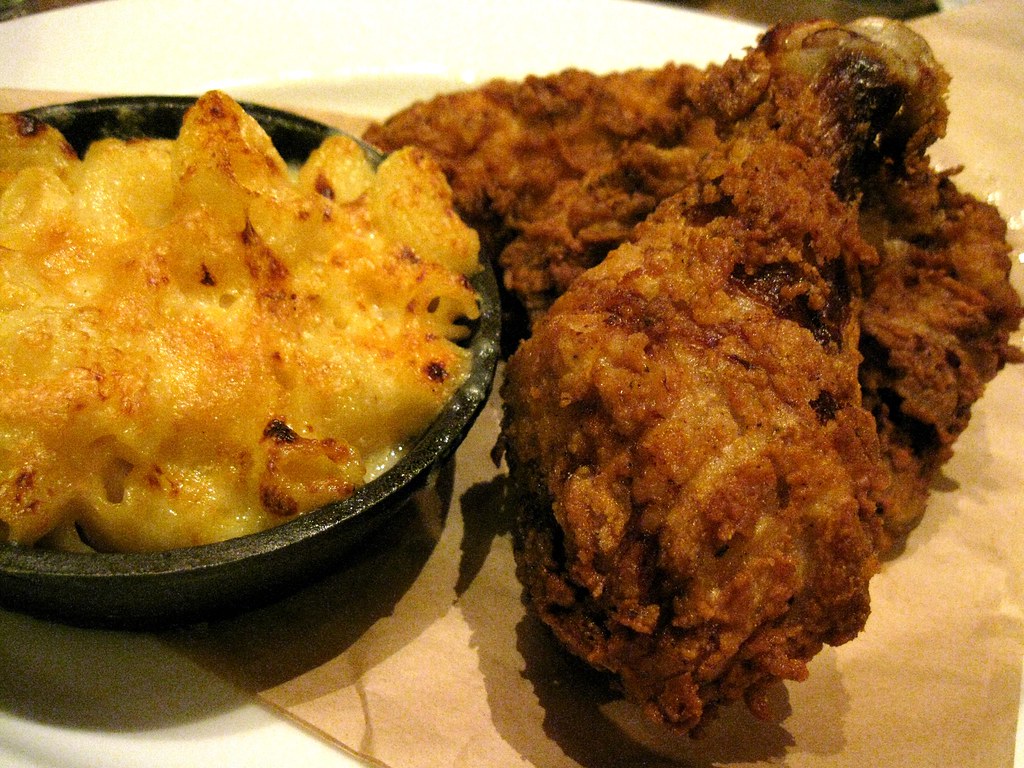
5. **High-Sodium & Salty Processed Foods**The ubiquitous presence of high-sodium and salty processed foods in modern diets poses a considerable, yet often underestimated, threat to eye health. “Consuming excessive amounts of sodium can lead to fluid retention and increase blood pressure, which may negatively affect eye health.” This elevation in blood pressure is particularly concerning for the delicate blood vessels supplying the retina, a crucial component of our visual system. The impact of high blood pressure on the eyes is not to be taken lightly.
Elevated blood pressure, known as hypertension, is directly linked to an increased risk of hypertensive retinopathy, a condition specifically affecting the retina. This damage can manifest through various symptoms, including “blurred vision, headaches, and vision loss.” The progression of hypertensive retinopathy can be insidious, starting with “subtle changes in the retinal arteries and potentially advancing to extensive retinal hemorrhages, swelling, and optic nerve damage.” Such damage compromises the integrity and function of the retina, leading to serious and sometimes irreversible vision problems.
A wide array of common foods are notorious for their high sodium content, making them significant contributors to this risk. The context explicitly mentions “Processed meats,” such as bacon, deli meats, and sausages, as well as “Canned soups,” which are often laden with salt for flavor and preservation. “Fast food” and “Deli meats” are also cited as culprits, alongside “Canned soups, pickles, and processed sauces,” and “Salty snacks like pretzels and chips.” Even “Instant noodles and frozen meals,” convenient as they may be, frequently contain excessive levels of sodium.
To protect your eyes from the adverse effects of high sodium, it is imperative to limit the intake of these high-salt foods. Focusing on fresh, whole foods, reading nutrition labels carefully, and opting for low-sodium alternatives can significantly reduce your daily sodium consumption. By managing blood pressure through mindful dietary choices, you help preserve the health of retinal blood vessels, thereby safeguarding against hypertensive retinopathy and maintaining clear, stable vision.
Read more about: Your Heart’s Best Friends and Worst Enemies: 15 Foods Cardiologists Say to Skip (Plus Healthier Picks!)

6. **Excessive Alcohol**While occasional moderate alcohol consumption may not significantly harm your eyes, excessive intake carries a multitude of risks that can profoundly impact ocular health. The liver plays a crucial role in absorbing essential vitamins needed for eye health, and “excessive alcohol consumption can lead to liver damage,” thereby disrupting this vital process. This impaired nutrient absorption can leave the eyes vulnerable to various deficiencies, weakening their protective mechanisms.
Beyond nutritional deficiencies, alcohol consumption “has also been linked to an increase in the risk of cataracts.” Cataracts are a prevalent eye condition characterized by “the clouding of the usually clear lens of the eye, leading to a decrease in vision.” This cloudiness gives rise to symptoms such as “blurry vision, difficulty with glare, faded colors, and trouble seeing at night,” significantly impeding daily activities and quality of life. The connection between heavy drinking and the acceleration of cataract formation is a serious concern for long-term vision.
Furthermore, excessive alcohol intake can lead to other direct and indirect forms of eye damage. It “can lead to dry eyes,” exacerbating discomfort and increasing vulnerability to irritation. Chronic heavy use can also result in “optic nerve damage,” which can cause permanent vision loss. The context states, “While occasional consumption may not harm your eyes, excessive alcohol intake can lead to dry eyes, optic nerve damage, and an increased risk of cataracts.” These cumulative effects underscore the importance of moderation.
The recommendation is clear: “It is recommended to limit alcohol intake to moderate levels.” This generally means up to one drink per day for women and up to two drinks per day for men. By adhering to these guidelines and being mindful of overall consumption, individuals can significantly reduce their risk of alcohol-related eye conditions, including liver-induced nutrient deficiencies, cataracts, dry eyes, and potential optic nerve damage, thereby preserving their vision and overall ocular well-being.
Read more about: Understanding Your Dollars: 12 US States Where Your Tax Burden is Surprisingly Low

7. **Excessive Caffeine & Caffeinated Drinks**While many of us rely on caffeine to jumpstart our day or maintain alertness, excessive consumption can introduce specific risks to eye health that warrant attention. One of the primary concerns is its potential to “lead to increased intraocular pressure,” which is a known and significant “risk factor for glaucoma.” Glaucoma is a serious and prevalent eye disease, affecting nearly three million Americans and standing as “the second leading cause of blindness in the nation.”
Glaucoma encompasses a range of conditions that result in “damage to the optic nerve due to increased pressure in the fluid of the eye.” This critical fluid typically drains where the iris and cornea meet through a mesh-like tissue. However, “When the body overproduces fluid or drainage is inhibited, pressure builds up,” leading to the characteristic nerve damage. This damage, if left unchecked, can gradually erode peripheral vision and, in advanced stages, lead to severe and irreversible vision loss. The context explicitly states, “While moderate caffeine consumption is generally safe, excessive intake can lead to increased intraocular pressure, which is a risk factor for glaucoma.”
Beyond the risk of glaucoma, excessive caffeine intake is also a significant contributor to dehydration. This dehydration, in turn, “worsens dry eye symptoms and eye strain,” leading to discomfort, irritation, and sometimes even blurry vision. The context mentions, “Similarly, too much caffeine can contribute to dehydration, which worsens dry eye symptoms and eye strain.” This effect is particularly pronounced when caffeine consumption is not adequately balanced with sufficient water intake.
To mitigate these risks, it is advised to “limit caffeine to moderate levels (1-2 cups of coffee per day).” This allows individuals to enjoy the stimulating effects of caffeine without potentially compromising their intraocular pressure or exacerbating dry eye conditions. Balancing caffeine intake with plenty of water is also crucial for maintaining optimal hydration. By practicing moderation, we can protect our eyes from both the long-term risk of glaucoma and the immediate discomfort of dry eye, ensuring clearer vision and sustained ocular comfort.
Continuing our exploration into the foods ophthalmologists urge us to limit, we now delve into specific categories of heavily processed items, particular fatty food sources, and artificial additives that significantly impact our precious vision. Understanding these widespread dietary elements is crucial for anyone committed to safeguarding their eye health against strain, inflammation, and serious ocular conditions.
Read more about: Seriously, What Happened? 10 Once-Popular Sodas Millennials Are Just Not Sipping Anymore

8. **Processed & Fast Foods**Beyond individual components like sugar or trans fats, the overarching category of heavily processed and fast foods presents a cumulative threat to eye health. These convenience-driven options are typically engineered to be high in a problematic combination of unhealthy fats, refined carbohydrates, and sodium, making them incredibly palatable but nutritionally detrimental. This complex mix of ingredients fuels inflammation and oxidative stress throughout the body, directly impacting the delicate structures within our eyes.
The persistent inflammatory response and oxidative damage induced by these foods can accelerate cellular aging in ocular tissues. This makes the eyes more susceptible to age-related conditions like macular degeneration and cataracts, where the protective mechanisms are overwhelmed by chronic stress. Furthermore, the high caloric density and low nutrient value of these foods often contribute to systemic issues like obesity and type 2 diabetes, which are well-established risk factors for serious vision problems such as diabetic retinopathy.
Think about the typical contents of many ready-to-eat meals or drive-thru orders: they are often loaded with elements that individually harm eye health, and together, their effects are amplified. The context explicitly warns about “Packaged chips, frozen meals, and processed meats,” as well as “Fast food burgers, fries, and fried chicken,” and “Ready-to-eat snacks with long shelf lives.” These items are designed for quick consumption, but their hidden tolls on our vision are anything but fast to manifest.
To truly protect your eyes, a conscious effort to minimize processed and fast food consumption is paramount. Prioritizing whole, unprocessed foods allows your body to receive the essential nutrients needed to combat oxidative stress and inflammation, supporting robust eye health. Opting for homemade meals and fresh ingredients is a powerful strategy to bypass the combined detrimental effects of these convenient, but harmful, food choices.
Read more about: Beyond the Bulk: The 15 Healthiest Costco Finds You Need in Your Cart Right Now!

9. **Fried & Oily Foods**While we previously discussed trans fats, the act of deep-frying and the oils typically used introduce additional concerns for eye health that warrant specific attention. Deep-fried foods, often prepared with “low quality oils (vegetable oil, canola oil, peanut oil, etc.),” undergo chemical changes at high temperatures, which can produce harmful compounds. These foods are notorious for containing unhealthy fats that directly contribute to clogged arteries and compromised cardiovascular function.
When arteries become clogged, the crucial blood flow to the eyes is significantly reduced, impeding the delivery of essential oxygen and nutrients vital for retinal health. This diminished circulation can lead to chronic oxygen deprivation of the retina, a condition that fosters damage and deterioration over time. The context clearly states that this can “contribute to retina damage, poor circulation, and inflammation, increasing the risk of cataracts and macular degeneration.”
The repeated consumption of these deep-fried and excessively oily foods can also perpetuate a cycle of systemic inflammation. This inflammation, in turn, stresses the delicate capillaries that supply the eyes, making them more vulnerable to damage and accelerating age-related changes. It’s a double-edged sword where both the type of fat and the cooking method conspire against optimal vision.
Examples of such culprits abound in everyday diets, including “Deep-fried snacks like samosas, fries, and pakoras,” “Fried chicken, tempura, and oily street foods.” Even seemingly innocuous “Commercial baked goods loaded with trans fats” can fall into this category due to their high content of industrially processed fats. Choosing baking, grilling, or steaming over deep-frying and opting for healthier cooking oils like olive or avocado oil are fundamental steps toward protecting your vision.
Read more about: I Tried Fried Chicken From 10 Grocery Stores – Here’s My Honest Ranking & The Only One I’ll Buy Again

10. **Artificial Sweeteners & Preservatives**Beyond the natural components of food, many processed items contain a host of artificial additives, including sweeteners and preservatives, which can pose insidious threats to eye health. These chemical compounds are introduced to enhance flavor, extend shelf life, or modify texture, but they often come with their own set of potential adverse effects. The context highlights that “Many processed foods contain artificial additives that may trigger eye irritation, allergies, and long-term vision issues.”
Artificial sweeteners, while marketed as a healthier alternative to sugar, can still have an impact on the body’s metabolic processes, and some individuals report adverse reactions including eye-related symptoms. More broadly, certain preservatives, frequently found in highly processed items, have been directly linked to exacerbating oxidative stress within the body. This continuous cellular stress can intensify inflammation and accelerate damage to ocular tissues, thereby increasing the overall risk of various eye diseases over time.
Consider the pervasive nature of these additives in modern food supplies. The context advises us to “Watch out for: Diet sodas and sugar-free snacks with artificial sweeteners,” which aim to reduce calorie intake but may introduce other risks. Similarly, “Packaged foods with high preservative content” and “Processed meats with nitrates and artificial coloring” are prevalent, and their cumulative effects on systemic health, including vision, cannot be overlooked.
To safeguard your eyes, it is advisable to limit consumption of foods laden with artificial sweeteners and preservatives. Reading food labels meticulously to identify and avoid these chemical compounds is a crucial habit to develop. Prioritizing fresh, whole foods that are free from such additives can significantly reduce your exposure to potential irritants and stressors, contributing to better long-term eye health.
Read more about: Your Heart’s Best Friends and Worst Enemies: 15 Foods Cardiologists Say to Skip (Plus Healthier Picks!)

11. **Fatty Red Meats**While saturated fats were identified earlier as a broad category, specific sources like fatty red meats warrant further attention due to their significant contribution to conditions detrimental to eye health. “Fatty cuts of meat,” such as beef, pork, and lamb, are often rich in saturated fats, which, when consumed excessively, can contribute significantly to cardiovascular diseases. The impact on the heart and blood vessels directly translates to ocular well-being.
The intricate network of tiny blood vessels supplying the eyes is particularly sensitive to the overall health of the circulatory system. When a diet high in fatty red meats contributes to “atherosclerosis or blood clots associated with cardiovascular conditions,” it impairs the delicate blood flow required for optimal retinal function. This restriction of blood supply means that vital nutrients and oxygen cannot reach the eyes efficiently, starving the tissues that are crucial for clear vision.
One particularly severe ocular outcome linked to this impaired blood flow is an increased risk of Central Retinal Vein Occlusion (CRVO). This alarming condition occurs when the main vein draining blood from the retina becomes blocked, often leading to sudden and severe vision loss. The chronic consumption of fatty red meats, with their high saturated fat content, elevates the risk of these vascular blockages, posing a direct threat to long-term vision clarity.
To mitigate these risks, it’s recommended to moderate your intake of fatty red meats. Choosing leaner cuts, removing visible fat, and incorporating more plant-based protein sources or fatty fish rich in beneficial omega-3s are excellent strategies. This dietary shift not only benefits your cardiovascular system but also plays a vital role in ensuring sustained, healthy blood flow to your eyes, protecting them from a range of vascular-related eye conditions.
Read more about: Seriously What Happened? 12 Once-Iconic Deli Meats Families Just Don’t Slice Anymore.

12. **Full-Fat Dairy Products**Like fatty red meats, full-fat dairy products represent another significant source of saturated fats that, in excessive amounts, can have an indirect yet profound impact on eye health. Items such as whole milk, cream, butter, and many cheeses are staple dietary components for many, but their high saturated fat content contributes to elevated cholesterol levels and cardiovascular strain, which are critical considerations for ocular health.
The mechanism of harm here is largely linked to the circulatory system. Diets consistently high in saturated fats can lead to the “buildup of cholesterol and plaque in blood vessels.” This accumulation restricts the smooth flow of blood throughout the body, including the incredibly fine capillaries that nourish the eyes. Adequate blood flow is paramount for delivering the oxygen and nutrients that the retina and optic nerve require to function correctly.
Reduced blood flow can increase the risk of developing several serious eye conditions. For instance, compromised circulation can contribute to increased intraocular pressure, a key risk factor for glaucoma, by impeding the proper drainage of fluid within the eye. Furthermore, the overall cardiovascular burden can heighten the risk of vascular occlusions in the retina, similar to those seen with other high-saturated fat sources, potentially leading to acute vision loss.
For the sake of your vision, it is advisable to moderate the consumption of full-fat dairy products. Opting for low-fat or fat-free alternatives, or exploring plant-based dairy substitutes, can significantly reduce your saturated fat intake. Making these conscious choices helps maintain healthier cholesterol levels and supports robust cardiovascular function, thereby ensuring optimal blood supply to your eyes and reducing the likelihood of related vision problems.
Read more about: Mind Blown! 15 ‘Healthy’ Foods Secretly Hiding More Sugar Than You Think

13. **Commercial Baked Goods**Commercial baked goods, encompassing items like pastries, cakes, and cookies, are a pervasive category of heavily processed foods that present a multi-faceted threat to eye health. These treats are often a triple threat, laden with “refined carbohydrates,” “high-sugar” content, and frequently, “trans fats” or other unhealthy oils. This potent combination creates a synergistic detrimental effect that extends far beyond general metabolic health and directly impacts ocular well-being.
The high levels of refined carbohydrates and sugars in these baked goods lead to rapid and pronounced blood sugar spikes. These frequent fluctuations stress the body’s regulatory systems and are directly implicated in the development and worsening of diabetic retinopathy, a leading cause of vision loss. Moreover, the unhealthy fats, including any hidden trans fats, contribute to inflammation and oxidative stress, accelerating the cellular damage that underpins age-related macular degeneration (AMD) and cataract formation.
Their convenient availability and appealing taste often lead to overconsumption, making it challenging to maintain a diet that supports eye health. The context warns about “Candies, pastries, and other high-sugar snacks,” as well as “Cakes, cookies, and pastries made with white flour,” and explicitly mentions “Commercial baked goods loaded with trans fats.” These items offer little to no nutritional value while contributing significantly to systemic inflammation and vascular damage.
To protect your vision, it is crucial to drastically limit commercial baked goods. Opting for homemade alternatives with whole-grain flours, reduced sugar, and healthy fats, or choosing fresh fruits for sweet cravings, can make a significant difference. By reducing your intake of these processed indulgences, you actively work to stabilize blood sugar, reduce inflammation, and safeguard the delicate structures of your eyes from cumulative harm.
Read more about: Your Heart’s Best Friends and Worst Enemies: 15 Foods Cardiologists Say to Skip (Plus Healthier Picks!)
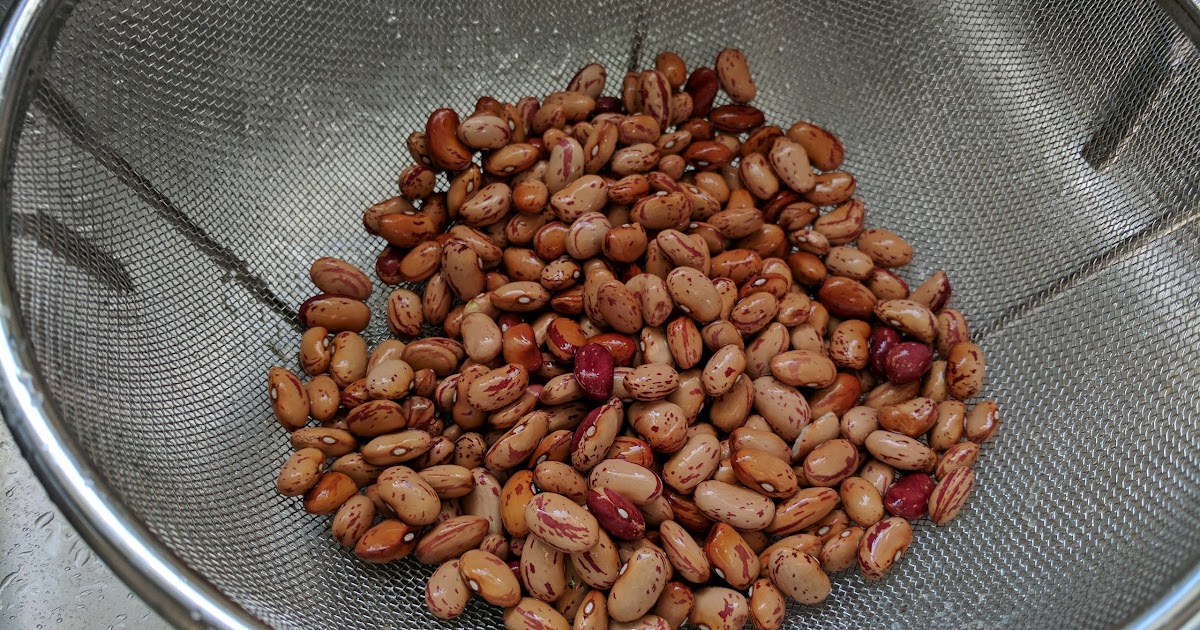
14. **Highly Processed Savory Snacks**Rounding out our list of foods to strictly limit for eye health are highly processed savory snacks, a category distinct from their sweet counterparts but equally problematic. These ubiquitous items, such as chips, pretzels, and many frozen meals, are typically characterized by excessive sodium, unhealthy fats, and refined ingredients. Their convenience often masks their profound negative impact on our circulatory system and, consequently, our eyes.
The primary concern with many savory snacks is their incredibly high sodium content. As discussed earlier, consuming too much sodium leads to fluid retention and elevated blood pressure, significantly increasing the risk of hypertensive retinopathy, a condition that damages the retinal blood vessels. Furthermore, many of these snacks also contain unhealthy fats, including processed vegetable oils, which contribute to oxidative stress and inflammation, further compromising ocular health.
Think about the typical contents of a bag of chips or a frozen dinner: they are often designed for maximum flavor and shelf life rather than nutritional benefit. The context specifically mentions “Salty snacks like pretzels and chips,” “Processed snack foods” (often high in trans fats), and “Instant noodles and frozen meals.” These items contribute to a diet that lacks essential eye-protective nutrients while inundating the body with harmful components.
To maintain optimal vision, it is imperative to severely restrict highly processed savory snacks. Replacing them with fresh, whole-food alternatives like nuts, seeds, fresh vegetables with hummus, or air-popped popcorn can provide satisfying crunch and flavor without the accompanying risks. Making these swaps helps manage blood pressure, reduce inflammation, and ensure that your eyes receive the nourishment they need to stay healthy and clear for years to come.
Read more about: Your Heart’s Best Friends and Worst Enemies: 15 Foods Cardiologists Say to Skip (Plus Healthier Picks!)
As we conclude our comprehensive guide, it’s clear that the adage “You are what you eat” resonates profoundly when it comes to the intricate health of our eyes. The journey to optimal vision isn’t solely about consuming beneficial nutrients; it’s equally about consciously limiting or avoiding those foods that actively work against our ocular well-being. By making informed, mindful dietary choices—steering clear of excessive sugars, unhealthy fats, refined carbs, and processed additives—we empower ourselves to protect and preserve our precious eyesight. Embracing a diet rich in whole, unprocessed foods is a proactive step, a powerful investment in the clarity and health of your vision for today and for all your tomorrows. Your eyes are a window to the world; let’s fuel them wisely.


